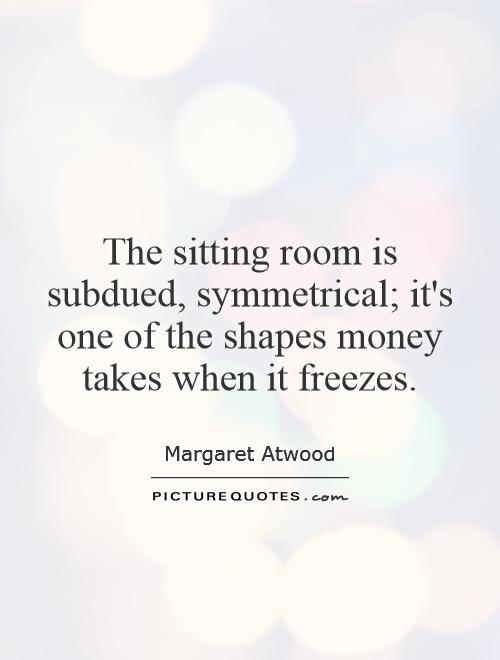The sitting room is subdued, symmetrical; it's one of the shapes money takes when it freezes

The sitting room is subdued, symmetrical; it's one of the shapes money takes when it freezes
In Margaret Atwood's novel "The Handmaid's Tale," the sitting room is described as subdued and symmetrical, embodying the idea that it is one of the shapes money takes when it freezes. This description speaks to the oppressive and rigid nature of the society depicted in the novel, where wealth and power are used to control and manipulate individuals.The sitting room in the Commander's house is a stark contrast to the chaos and uncertainty that exists outside its walls. It is a place of order and control, where everything is carefully arranged and maintained. The symmetry of the room reflects the strict hierarchy and social order that governs the society in which the characters live.
The idea that the sitting room is one of the shapes money takes when it freezes suggests that wealth has become stagnant and unchanging in this society. It is no longer a means of freedom or expression, but rather a tool of oppression and control. The frozen quality of the money mirrors the frozen quality of the society itself, where progress and change are stifled in favor of maintaining the status quo.
Atwood uses the sitting room as a symbol of the larger themes of power and control in "The Handmaid's Tale." The room represents the ways in which wealth and privilege can be used to maintain authority and suppress dissent. It is a place where the rules are enforced and deviations from the norm are not tolerated.
Overall, the description of the sitting room as subdued and symmetrical in "The Handmaid's Tale" serves to highlight the oppressive nature of the society in which the characters live. It is a reminder that even in the most luxurious and comfortable of surroundings, there is still a sense of unease and tension that comes from living in a society built on inequality and injustice.












 Friendship Quotes
Friendship Quotes Love Quotes
Love Quotes Life Quotes
Life Quotes Funny Quotes
Funny Quotes Motivational Quotes
Motivational Quotes Inspirational Quotes
Inspirational Quotes